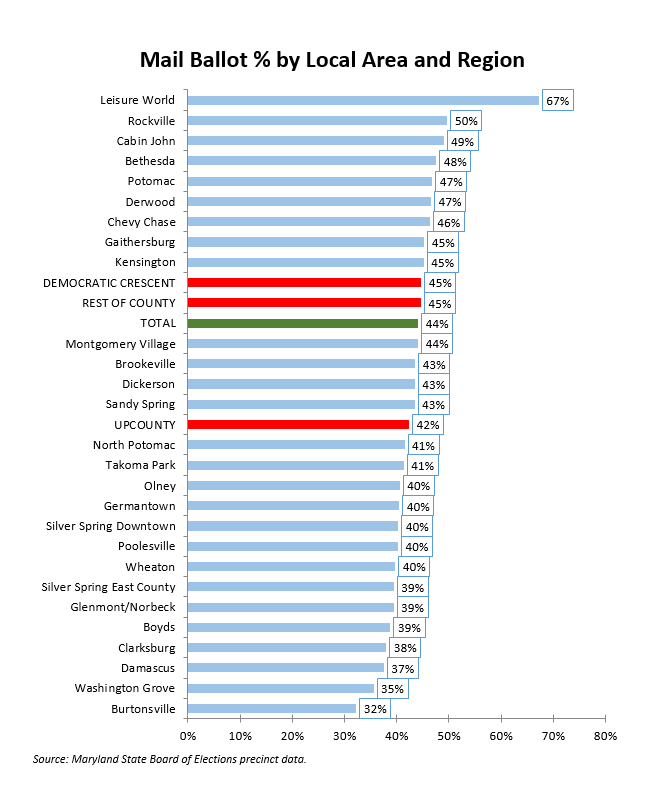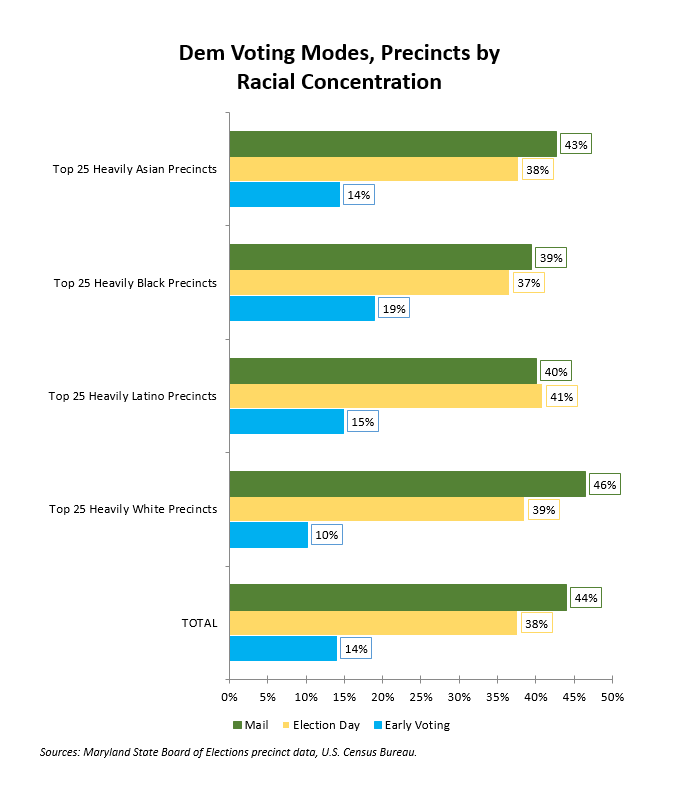By Adam Pagnucco.
Part One examined differences between communities in their turnout rate, something that should not surprise any political insiders in MoCo. Now let’s look at a more recent phenomenon – differences in how people cast their votes.
For decades, the huge majority of votes in elections came on election day. But in recent years, other voting modes have made gains. Mail ballot use has risen steadily since the early 1990s, peaking at 12% of all ballots in MoCo’s 2008 general election. Early voting was first used in 2010 and rose to comprise a third of all votes cast in MoCo’s 2016 general election. But even then, a majority of votes were cast on election day.
Then came the pandemic. Mail accounted for 98% of votes cast in the county’s 2020 primary and 65% in the general. The big question was how popular mail voting would be this year.
The answer turned out to be pretty popular. According to the state’s turnout data for MoCo, 42% of this year’s primary votes were cast by mail, 40% were cast on election day, 14% were cast early and less than 5% were provisional ballots. Among Democrats, the distribution was 44% by mail, 38% on election day, 14% early and 4% provisionals. The concept of “election day” has turned into “election weeks.”
That’s not all. Different communities are making different choices between these voting modes. The chart below shows the percentage of ballots cast by mail by region and local area in this year’s Dem primary. (See my methodology post for definitions.)

Leisure World is a HUGE outlier with two-thirds of its ballots cast by mail. This is not a fluke. Precinct 9-28, which contains Gaithersburg’s Asbury retirement community, cast 76% of its votes by mail. Precinct 5-4, which contains Silver Spring’s Riderwood Village retirement community, cast 57% of its votes by mail. The voter file will make for interesting reading on this point.
Now let’s look at the percentage of votes cast on election day.

This time, Upcounty emerges as a slight outlier, with Germantown, Clarksburg and several smaller nearby communities more likely to vote on election day than most of the rest of the county.
Here is the percentage of votes cast at early voting centers.

Convenience likely explains this variable. Many of the communities that lead in early voting have early voting centers inside them or nearby.
The final chart shows the distribution of voting mode for the 25 most concentrated Asian, Black, Latino and White precincts.

Mail led for every group except the Latino precincts and was most popular in White and Asian precincts. A bare plurality of votes cast in Latino precincts came on election day. Early voting was most popular in Black precincts. It remains to be seen whether these trends are durable over time.
Overall, turnout patterns in this year’s primary reflect the county’s long history – areas that are heavily White, Downcounty, older and more affluent vote at higher rates than areas that are not. On this point, there is little evidence of change.
